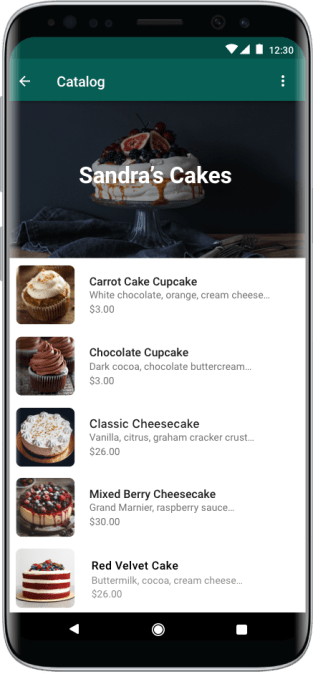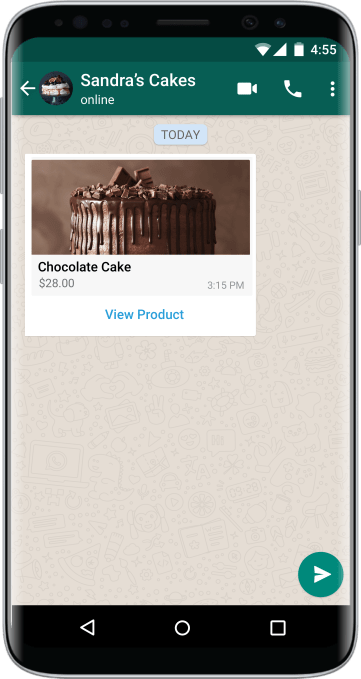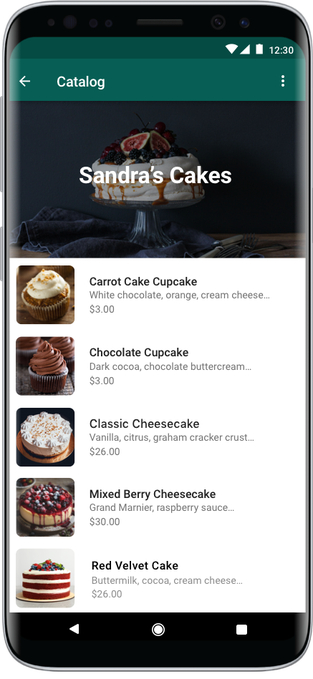WhatsApp is expanding the capabilities of its dedicated app for business owners who want to reach their customers on smartphones. The Facebook-owned company is today introducing a new “catalogs” feature to the WhatsApp Business app that will allow the businesses to showcase and share their products and services to potential customers, who can browse photos, view prices, and read product descriptions to help inform their purchase decisions.
These catalogs effectively serve as a mobile storefront on WhatsApp — and one that can be operated without the need for a web page at all. Instead, the business owner simply visits the new Catalog option in their app’s settings and uploads photos of whatever is they’re selling and fill out the details which can optionally include a product or service code (e.g. a SKU), if need be.

These catalog items can then be sent to customers in a WhatsApp chat message. For example, if a customer asks about a particular item or for a recommendation, the business owner can tap to send a particular item from their catalog that includes all the information the customer wants to know.
The catalogs are particularly appealing to WhatsApp’s customer base in emerging markets, where much of users’ online activity is taking place inside apps instead of on the wider web. As new users come online in these regions, they’re often skipping the PC revolution entirely and going straight to smartphones instead.

Already, the WhatsApp Business app is claiming a portion of that market. Earlier this year, the company said the app had reached some 5 million business customers.
The Catalogs feature today joins several others designed with the needs of businesses in mind, including business profiles, quick replies for messages, chat labels, and automated messages.
WhatsApp says the new feature is available to businesses using the WhatsApp Business app on both Android and iPhone in Brazil, Germany, India, Indonesia, Mexico, the U.K., and the U.S., for the time being. It will roll out to other worldwide markets “soon,” but didn’t offer a more exact launch time frame.













